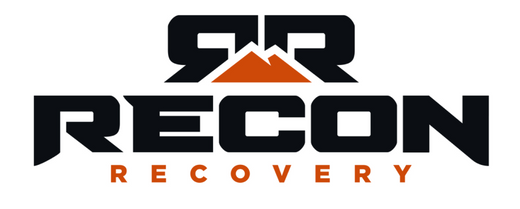
What To Know Before Buying An Air System

One of the must-haves on any off-road trip is an air system. Air systems, also known as on-board air, give you the ability to air up your tires after airing them down for the trail, or recovering after experiencing a puncture that might be fixed with a plug, for example. Airing down your tires is one of the most important things you can do when you hit the trail, and having the ability to return them to street pressure is one of the most important things when you hit the road.
Airing down your tires provides many benefits that include a larger, more compliant contact patch for improved traction, improved ride quality, the ability for the tire to absorb harder hits, and allows the tire to conform to the terrain better.
When looking at on-board air systems, there are basically three categories, with some variation within those categories. Keep on reading to learn what to look for in an air system and the pros and cons of each.
Portable Air Compressors

Pros: Portable air compressors are easily powered by the vehicle through the 12-volt socket or via battery clamps. Because these compressors can use a 12-volt socket, they often have lower performance than their hard-wired counterparts. These systems can be transferred between vehicles and often come in a hard case or a carrying bag.
Cons: Portable systems can take up valuable space and are sometimes bulky to store. Also, not being hard-mounted means they can bounce around in rough terrain and can be more easily damaged if not secured property.
Hard-mounted/Hardwired Compressors

Pros: These compressors tend to be on the more powerful side and are mounted to the vehicle, making them part of the trip, every time. Being hardwired to the vehicle and mounted on a bracket means they are always secure and at the ready. The higher-end versions of the compressors tend to have a 100-percent duty cycle, meaning they are designed to be run continuously, especially helpful on hot days where the air density decrease means they are pushing less air volume and running longer. Can power air
lockers or feed a tank. These tanks can also be plumbed with a storage tank to make airing up faster,
Cons: While hard-mounted/hardwired systems may be one of the most popular setups on the market, they lack portability and require electrical knowhow to wire into a vehicle.
Shop Hard Mounted / On Board Air Compressors
CO2 Air Tanks

Pros: CO2 systems are the fastest way to fill-up tires, can power pneumatic tools, and air lockers. They come in various capacities and can be secured on a bracket. They can easily be transferred between vehicles, especially when used with an accessory bag, and no electrical connection is needed.
Cons: CO2 systems are the bulkiest setups on the market and complete CO2 systems can be pricey. The tanks also require periodic recertification and have no way to be refilled when on the trail. When you are out of CO2, you are out.
Now that you understand the three basic types of on-board air systems, it should be easier to decide which setup is right for you. However, once you decide which one to go with, you still have to choose a system with the following considerations in mind.
Size and Weight: Depending on the vehicle and available space, the size and weight of an on-board air system may be the most important consideration
CFM Output: CFM stands for cubic feet per minute and is a measurement of volume. However, not all manufacturers rate CFM the same. While an unloaded CFM rating might look good, it’s important to know what the actual CFM is with a load, as there can be a big performance drop off under load. Higher CFM pumps can run pneumatic tools, which is always a nice feature to have.
Amp Draw: Knowing the amp draw is crucial to knowing how efficient your compressor is and also how to wire into your vehicle’s electrical system in the safest way possible.
PSI rating: Most compressors made for vehicle tires are rated in the 100-150 psi range, which is more than enough to fill up a truck tire, or even operate an air locker.
Duty Cycle: Duty cycle is the ability of the compressor to run for long periods of time. Higher quality compressors offer a 100-percent duty cycle, which means they can be run indefinitely, while a 50-percent duty cycle compressor might be able to run for 30 minutes, before cooling down for another 30.
Portability: For some, portability might be the ultimate feature, for others not so much. Portability is great for weekend warriors, but those who have a dedicated adventure rig might want something more permanent.
Environmental Resistance: Let’s face it, life on the trail isn’t great on equipment. It can be wet, dusty, muddy and any compressor you choose should have at minimum dust resistance. Good ones will be able to be submerged and will even have air filters to clean the compressor intake path of dust.
Accessories: After you buy the compressor, the fun has just begun. There are all sorts of accessories that can make airing up even easier. Distribution blocks for multiple air pathways, digital air gauges, Bluetooth controllers, and four-tire air hoses that allow you to fill up all the tires at once are all options that exist out on the market.
Recertification: This is specific to CO2 air tank systems, which need to be pressure-tested and recertified every five years.
Portable compressors come in all sizes and power levels.

Entry level compressors are often powered by a 12-volt plug.

Some compressors can be mounted in unique locations, such as under the front seats.

Premium portable systems come in a hard case and include an air tank with the system.

